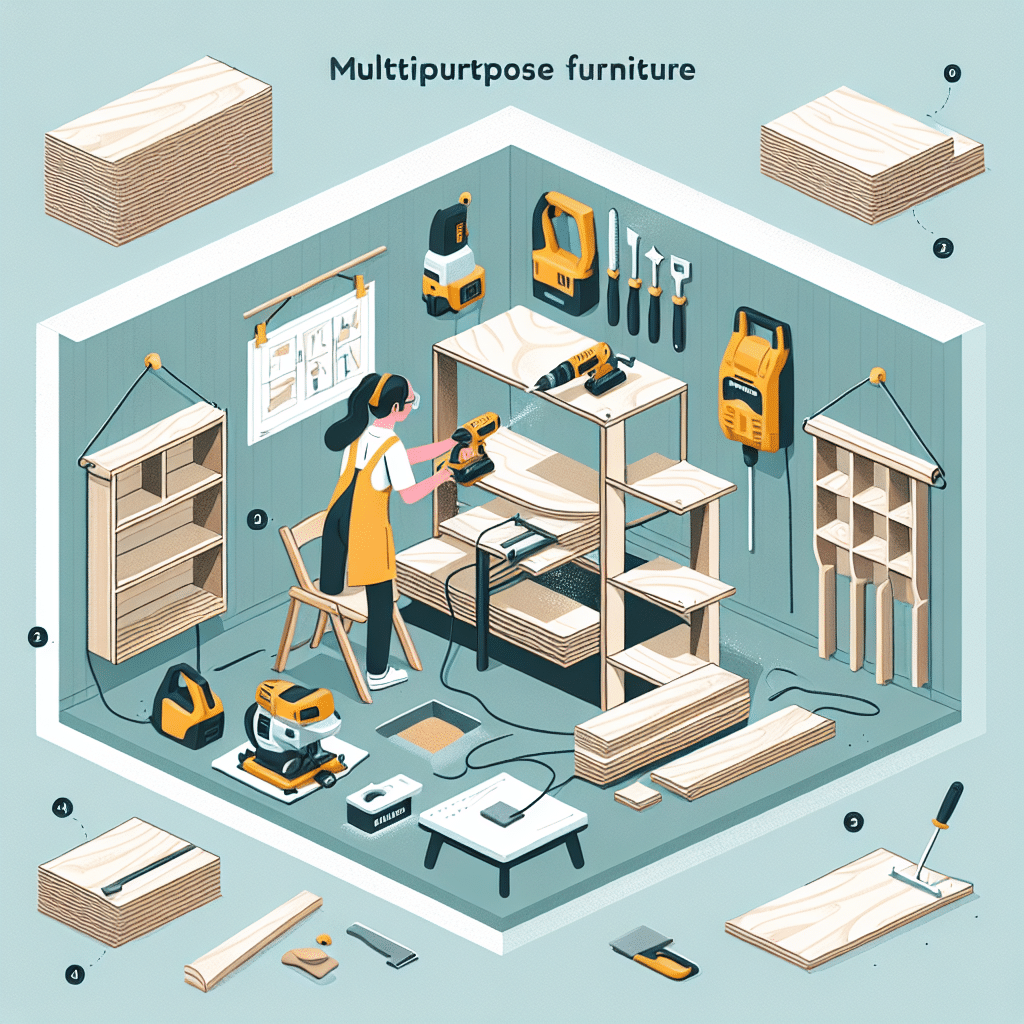Understanding Multipurpose Furniture
Multipurpose furniture serves multiple functions, optimizing space and enhancing utility, especially in small living areas. The trend has seized the attention of homeowners, apartment dwellers, and design enthusiasts, making it a popular choice for modern interiors. By constructing these pieces at home, you can add a unique touch to your space while saving money and allowing for customization.
Materials to Consider
- Plywood: Sturdy and versatile, plywood is ideal for building furniture frames. It can be painted or stained to match your décor.
- MDF (Medium-Density Fiberboard): It is an excellent alternative for creating shelves and cabinets due to its smooth finish.
- Solid Wood: For durability and aesthetics, solid wood pieces can serve as focal points in your multipurpose furniture.
- Hardware: Hinges, drawer slides, and strong adhesives are essential for mobile components and structural integrity.
- Foam and Fabric: For upholstery, high-density foam with decorative fabric can turn a simple piece into comfortable seating.
Tools Required
- Power Drill: Necessary for making holes and driving screws.
- Circular Saw or Table Saw: Ideal for cutting wood to the required dimensions.
- Screwdriver: For tightening screws and attaching hardware.
- Measuring Tape: To ensure precision in measurements.
- Sander: For smoothing edges and surfaces.
- Clamps: Helpful for holding pieces together while they are being joined.
- Paintbrush or Roller: For finishing touches on your furniture.
Popular Multipurpose Furniture Ideas
-
Convertible Sofa Bed
- Materials: Plywood, cushions, and hinges.
- Instructions: Cut plywood sheets to form a basic frame. Attach hinges to the backrest to fold down flat. Add cushions for comfort. Paint or stain as desired.
-
Ottoman with Storage
- Materials: Solid wood or MDF.
- Instructions: Construct a square or rectangular box. Ensure the lid can open up to reveal storage space. Upholster the top with foam and fabric for added comfort.
-
Folding Dining Table
- Materials: Plywood, hinges, and folding table legs.
- Instructions: Create a tabletop that can unfold and fold back against the wall. Install hinges for easy manipulation and legs that can lock in place.
-
Bookshelf Desk
- Materials: MDF sheets and brackets.
- Instructions: Construct a bookshelf unit and incorporate a fold-out desk section. Use brackets to support the desk when it’s in use and tuck it away when not.
-
Murphy Bed
- Materials: Plywood, wall brackets, and mattress.
- Instructions: Build a frame that fits your mattress size. Attach it to the wall using heavy-duty brackets. Ensure it can be lifted and secured when in use.
Steps to Create Multipurpose Furniture
-
Design Your Furniture
- Start with sketches or use furniture design software. Consider the dimensions of your room, the intended purpose, and potential flexibility in design.
-
Measure Twice, Cut Once
- Accurate measurements help minimize waste. Double-check your dimensions before cutting materials.
-
Assemble the Frame
- Use clamps to hold pieces together while screwing or nailing them. Ensure structural integrity by securing corners with brackets.
-
Sanding and Finishing
- Smooth all surfaces using a sander. Apply paint, stain, or varnish to finish your piece and protect it from wear.
-
Adding Functional Features
- Install hinges, wheels, or locks based on your design. Ensure that drawers slide easily and all moving parts operate smoothly.
-
Test for Stability
- Once completed, check for wobbliness or instability. Reinforce sections that may need additional support.
Sustainability and Upcycling
Building multipurpose furniture can also be an environmentally friendly endeavor, particularly if you use reclaimed wood or repurpose old furniture. Look for discarded tables, chairs, or wardrobes that can be transformed into something new and useful. Upcycling not only conserves resources but also allows for unique, character-filled pieces in your home.
Tips for Success
- Customization: Personalize your furniture by choosing colors and fabrics that reflect your style.
- Research: Check online tutorials, videos, and DIY blogs for new ideas and techniques.
- Practice Patience: Take your time during each phase of construction to ensure quality craftsmanship.
- Be Safe: Always wear protective gear when using power tools and working with materials.
Incorporating Technology
Consider integrating technology into your multipurpose furniture. Wireless charging stations, built-in speakers, and LED lights can make your furniture not just functional but also smart. These features cater to modern needs, making life more convenient while saving space.
Storage Solutions
To maximize the utility of your multipurpose furniture, think creatively about storage. For instance, consider adding pull-out drawers beneath a sofa or creating hidden compartments in a bench. Vertical storage can also be achieved through high shelving or wall-mounted racks that utilize wall space efficiently.
Final Thoughts
Creating multipurpose furniture at home is a rewarding project that combines creativity, functionality, and craftsmanship. By following the right steps and using the suitable materials, you can design beautiful, practical furniture that will elevate your home’s aesthetic while providing exceptional utility. Embrace the trend of functional art and transform your living space into an organized, stylish retreat.
